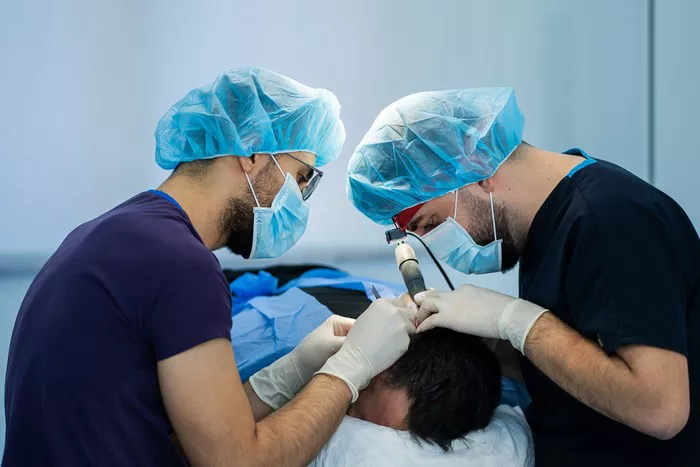Hair loss is a common concern affecting millions of people worldwide. Whether caused by genetics, aging, stress, or medical conditions, thinning hair can impact self-esteem and quality of life. Fortunately, advancements in science and technology have made hair restoration more accessible and effective than ever.
But with so many options available, how do you choose the best method? This guide explores the most popular hair restoration techniques, detailing how they work, their pros and cons, costs, and suitability for different needs. By the end, you’ll have a clearer understanding of which approach might be right for you.
Understanding Hair Loss: The Basics
Before diving into solutions, it’s important to understand why hair loss happens. The most common cause is androgenetic alopecia (pattern baldness), which affects both men and women.
This genetic condition is linked to hormones called androgens, particularly dihydrotestosterone (DHT), which shrink hair follicles over time. Other causes include:
- Medical conditions (e.g., thyroid disorders, anemia).
- Stress (physical or emotional, leading to telogen effluvium).
- Hormonal changes (e.g., pregnancy, menopause).
- Poor nutrition (deficiencies in iron, protein, or vitamins).
- Hairstyles/treatments (tight braids, chemical damage).
Identifying the root cause is the first step toward effective treatment. A dermatologist or trichologist can help diagnose your hair loss type through exams, blood tests, or scalp biopsies.
Medications for Hair Restoration
Medications are often the first line of defense against hair loss. They’re non-invasive, affordable, and widely available.
Minoxidil
- How it works: A topical solution applied to the scalp, minoxidil widens blood vessels to improve follicle nutrient supply. It’s FDA-approved for both men and women.
- Effectiveness: Slows hair loss and stimulates regrowth in 40–60% of users. Results appear after 4–6 months.
- Pros: Over-the-counter availability, minimal side effects (scalp irritation).
- Cons: Requires lifelong use; stopping reverses gains.
Finasteride
- How it works: A daily oral pill that blocks DHT production. FDA-approved for men only.
- Effectiveness: 80–90% of men see slowed loss; 65% regrow hair.
- Pros: High success rate for genetic baldness.
- Cons: Potential side effects (low libido, erectile dysfunction). Not safe for women.
Other Medications
- Spironolactone: Anti-androgen pill for women with hormonal hair loss.
- Dutasteride: Stronger DHT blocker than finasteride, used off-label.
Surgical Hair Restoration
For those seeking permanent results, surgical options transplant healthy follicles to thinning areas.
Follicular Unit Transplantation (FUT)
- Procedure: A strip of scalp is removed from the donor area (usually the back of the head). Follicles are dissected and implanted into balding zones.
- Pros: Cost-effective for large areas; high graft survival rate.
- Cons: Linear scar; longer recovery (2–3 weeks).
Follicular Unit Extraction (FUE)
- Procedure: Individual follicles are extracted and transplanted.
- Pros: No linear scar; faster recovery (1 week).
- Cons: More expensive; time-consuming for large areas.
Robotic Hair Transplants
- How it works: Advanced robots (e.g., ARTAS®) assist in precise FUE grafting.
- Pros: Reduced human error; natural-looking results.
- Cons: Highest cost ($15,000+).
Recovery & Results: Swelling and scabbing resolve in 7–10 days. Transplanted hair sheds initially but regrows permanently after 3–4 months. Full results take 12–18 months.
Non-Surgical Treatments
These methods promote growth without surgery or daily medications.
Platelet-Rich Plasma (PRP) Therapy
- How it works: Your blood is drawn, spun to concentrate platelets, and injected into the scalp. Growth factors stimulate follicles.
- Effectiveness: 70% see thicker hair after 3–6 sessions.
- Cost: 500–2,000 per session.
Low-Level Laser Therapy (LLLT)
- How it works: Lasers (via caps or combs) boost blood flow and cellular activity.
- Effectiveness: FDA-cleared for genetic hair loss; 30–40% improvement after 6 months.
- Pros: Painless, home-use devices available.
- Cons: Slow results; requires consistency.
Scalp Micropigmentation (SMP)
- How it works: Tattooing tiny dots to mimic shaved hair.
- Pros: Instant “stubble” look; camouflages scars.
- Cons: Not real hair; touch-ups needed every 3–5 years.
Lifestyle Changes & Natural Remedies
Healthy habits support hair growth and enhance other treatments.
Diet & Supplements
- Protein: Hair is made of keratin; aim for 50g of protein daily.
- Vitamins: Biotin, iron, zinc, and vitamin D combat deficiencies.
- Omega-3s: Found in fish, nuts, and seeds, they reduce inflammation.
Stress Management
- Yoga/Meditation: Lowers cortisol levels linked to hair loss.
- Sleep: 7–9 hours nightly aids cell repair.
Natural Topicals
- Rosemary Oil: Studies show it rivals minoxidil in stimulating growth.
- Aloe Vera: Soothes scalp irritation and unclogs follicles.
Alternative & Emerging Therapies
While less proven, these options show promise:
- Stem Cell Therapy: Injecting stem cells to regenerate follicles (experimental).
- Hair Cloning: Replicating follicles in labs (still in trials).
- JAK Inhibitors: Oral/injectable drugs showing regrowth in alopecia areata.
How to Choose the Best Method
Consider these factors:
- Cause of Hair Loss: Genetic? Hormonal? Stress-related?
- Budget: Medications (20–100/month) vs. surgery (4,000–15,000).
- Lifestyle: Time for recovery? Willingness to commit to daily treatments?
- Severity: Early thinning vs. advanced baldness.
Consult a Specialist: A dermatologist or hair surgeon can tailor a plan combining multiple methods (e.g., PRP + minoxidil or FUE + laser therapy).
Conclusion
Hair restoration is not one-size-fits-all. While medications and PRP offer gradual improvements, surgery provides permanent but costly results. Natural remedies and lifestyle changes support overall hair health but work best alongside other treatments. Remember:
- Consistency is key: Most methods require months to show results.
- Start early: Treating hair loss at the first sign yields better outcomes.
- Stay informed: New technologies emerge yearly, offering hope for even better solutions.
By understanding your options and consulting experts, you can reclaim confidence and enjoy healthier, fuller hair.
Related topics:
How to Use Conditioner on Afro Hair: A Complete Guide
Top 5 Conditioners That Work for Every Hair Type
How to Fix Broken Hair at Roots: Effective Repair Guide


